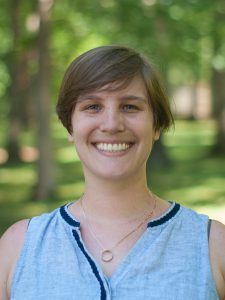MSTPublications: July 2023
 Unified tumor growth mechanisms from multimodel inference and dataset integration.
Unified tumor growth mechanisms from multimodel inference and dataset integration.
Beik SP, Harris LA, Kochen MA, Sage J, Quaranta V, Lopez CF.
PLoS Comput Biol. 2023 Jul 5;19(7):e1011215. doi: 10.1371/journal.pcbi.1011215. eCollection 2023 Jul.
Mechanistic models of biological processes can explain observed phenomena and predict responses to a perturbation. A mathematical model is typically constructed using expert knowledge and informal reasoning to generate a mechanistic explanation for a given observation. Although this approach works well for simple systems with abundant data and well-established principles, quantitative biology is often faced with a dearth of both data and knowledge about a process, thus making it challenging to identify and validate all possible mechanistic hypothesis underlying a system behavior. To overcome these limitations, we introduce a Bayesian multimodel inference (Bayes-MMI) methodology, which quantifies how mechanistic hypotheses can explain a given experimental datasets, and concurrently, how each dataset informs a given model hypothesis, thus enabling hypothesis space exploration in the context of available data. We demonstrate this approach to probe standing questions about heterogeneity, lineage plasticity, and cell-cell interactions in tumor growth mechanisms of small cell lung cancer (SCLC). We integrate three datasets that each formulated different explanations for tumor growth mechanisms in SCLC, apply Bayes-MMI and find that the data supports model predictions for tumor evolution promoted by high lineage plasticity, rather than through expanding rare stem-like populations. In addition, the models predict that in the presence of cells associated with the SCLC-N or SCLC-A2 subtypes, the transition from the SCLC-A subtype to the SCLC-Y subtype through an intermediate is decelerated. Together, these predictions provide a testable hypothesis for observed juxtaposed results in SCLC growth and a mechanistic interpretation for tumor treatment resistance.
 Time-distance vision transformers in lung cancer diagnosis from longitudinal computed tomography.
Time-distance vision transformers in lung cancer diagnosis from longitudinal computed tomography.
Li TZ, Xu K, Gao R, Tang Y, Lasko TA, Maldonado F, Sandler KL, Landman BA.
Proc SPIE Int Soc Opt Eng. 2023 Feb;12464:1246412. doi: 10.1117/12.2653911. Epub 2023 Apr 3.
Features learned from single radiologic images are unable to provide information about whether and how much a lesion may be changing over time. Time-dependent features computed from repeated images can capture those changes and help identify malignant lesions by their temporal behavior. However, longitudinal medical imaging presents the unique challenge of sparse, irregular time intervals in data acquisition. While self-attention has been shown to be a versatile and efficient learning mechanism for time series and natural images, its potential for interpreting temporal distance between sparse, irregularly sampled spatial features has not been explored. In this work, we propose two interpretations of a time-distance vision transformer (ViT) by using (1) vector embeddings of continuous time and (2) a temporal emphasis model to scale self-attention weights. The two algorithms are evaluated based on benign versus malignant lung cancer discrimination of synthetic pulmonary nodules and lung screening computed tomography studies from the National Lung Screening Trial (NLST). Experiments evaluating the time-distance ViTs on synthetic nodules show a fundamental improvement in classifying irregularly sampled longitudinal images when compared to standard ViTs. In cross-validation on screening chest CTs from the NLST, our methods (0.785 and 0.786 AUC respectively) significantly outperform a cross-sectional approach (0.734 AUC) and match the discriminative performance of the leading longitudinal medical imaging algorithm (0.779 AUC) on benign versus malignant classification. This work represents the first self-attention-based framework for classifying longitudinal medical images. Our code is available at https://github.com/tom1193/time-distance-transformer.
 Quantifying emphysema in lung screening computed tomography with robust automated lobe segmentation.
Quantifying emphysema in lung screening computed tomography with robust automated lobe segmentation.
Li TZ, Hin Lee H, Xu K, Gao R, Dawant BM, Maldonado F, Sandler KL, Landman BA.
J Med Imaging (Bellingham). 2023 Jul;10(4):044002. doi: 10.1117/1.JMI.10.4.044002. Epub 2023 Jul 18.
Purpose: Anatomy-based quantification of emphysema in a lung screening cohort has the potential to improve lung cancer risk stratification and risk communication. Segmenting lung lobes is an essential step in this analysis, but leading lobe segmentation algorithms have not been validated for lung screening computed tomography (CT).
Approach: In this work, we develop an automated approach to lobar emphysema quantification and study its association with lung cancer incidence. We combine self-supervised training with level set regularization and finetuning with radiologist annotations on three datasets to develop a lobe segmentation algorithm that is robust for lung screening CT. Using this algorithm, we extract quantitative CT measures for a cohort (n=1189) from the National Lung Screening Trial and analyze the multivariate association with lung cancer incidence.
Results: Our lobe segmentation approach achieved an external validation Dice of 0.93, significantly outperforming a leading algorithm at 0.90 (p < 0.01). The percentage of low attenuation volume in the right upper lobe was associated with increased lung cancer incidence (odds ratio: 1.97; 95% CI: [1.06, 3.66]) independent of PLCOm2012 risk factors and diagnosis of whole lung emphysema. Quantitative lobar emphysema improved the goodness-of-fit to lung cancer incidence (χ2 = 7.48, p = 0.02).
Conclusions: We are the first to develop and validate an automated lobe segmentation algorithm that is robust to smoking-related pathology. We discover a quantitative risk factor, lending further evidence that regional emphysema is independently associated with increased lung cancer incidence. The algorithm is provided at https://github.com/MASILab/EmphysemaSeg.
 Multicenter clinical and functional evidence reclassifies a recurrent noncanonical filamin C splice-altering variant
Multicenter clinical and functional evidence reclassifies a recurrent noncanonical filamin C splice-altering variant
O’Neill MJ, Chen SN, Rumping L, Johnson R, van Slegtenhorst M, Glazer AM, Yang T, Solus JF, Laudeman J, Mitchell DW, Vanags LR, Kroncke BM, Anderson K, Gao S, Verdonschot JAJ, Brunner H, Hellebrekers D, Taylor MRG, Roden DM, Wessels MW, Lekanne Dit Deprez RH, Fatkin D, Mestroni L, Shoemaker MB.
2023 May 9:S1547-5271(23)02219-1. doi: 10.1016/j.hrthm.2023.05.006. Epub ahead of print.
Background: Truncating variants in filamin C (FLNC) can cause arrhythmogenic cardiomyopathy (ACM) through haploinsufficiency. Noncanonical splice-altering variants may contribute to this phenotype.
Objective: The purpose of this study was to investigate the clinical and functional consequences of a recurrent FLNC intronic variant of uncertain significance (VUS), c.970-4A>G.
Methods: Clinical data in 9 variant heterozygotes from 4 kindreds were obtained from 5 tertiary health care centers. We used in silico predictors and functional studies with peripheral blood and patient-specific induced pluripotent stem cell-derived cardiomyocytes (iPSC-CMs). Isolated RNA was studied by reverse transcription polymerase chain reaction. iPSC-CMs were further characterized at baseline and after nonsense-mediated decay (NMD) inhibition, using quantitative polymerase chain reaction (qPCR), RNA-sequencing, and cellular electrophysiology. American College of Medical Genetics and Genomics (ACMG) criteria were used to adjudicate variant pathogenicity.
Results: Variant heterozygotes displayed a spectrum of disease phenotypes, spanning from mild ventricular dysfunction with palpitations to severe ventricular arrhythmias requiring device shocks or progressive cardiomyopathy requiring heart transplantation. Consistent with in silico predictors, the c.970-4A>G FLNC variant activated a cryptic splice acceptor site, introducing a 3-bp insertion containing a premature termination codon. NMD inhibition upregulated aberrantly spliced transcripts by qPCR and RNA-sequencing. Patch clamp studies revealed irregular spontaneous action potentials, increased action potential duration, and increased sodium late current in proband-derived iPSC-CMs. These findings fulfilled multiple ACMG criteria for pathogenicity.
Conclusion: Clinical, in silico, and functional evidence support the prediction that the intronic c.970-4A>G VUS disrupts splicing and drives ACM, enabling reclassification from VUS to pathogenic.
Cholinergic modulation of sensory perception and plasticity.
Kunnath AJ, Gifford RH, Wallace MT.
Neurosci Biobehav Rev. 2023 Jul 17;152:105323. doi: 10.1016/j.neubiorev.2023.105323. Online ahead of print. Review.
Bioinformatics Screen Reveals Gli-Mediated Hedgehog Signaling as an Associated Pathway to Poor Immune Infiltration of Dedifferentiated Liposarcoma.
Beadle EP, Bennett NE, Rhoades JA.
Cancers (Basel). 2023 Jun 27;15(13):3360. doi: 10.3390/cancers15133360.
Acquired secondary HER2 mutations enhance HER2/MAPK signaling and promote resistance to HER2 kinase inhibition in breast cancer.
Marin A, Mamun AA, Patel H, Akamatsu H, Ye D, Sudhan DR, Eli L, Marcelain K, Brown BP, Meiler J, Arteaga CL, Hanker AB.
Cancer Res. 2023 Jul 5:CAN-22-3617. doi: 10.1158/0008-5472.CAN-22-3617. Online ahead of print.
SELENOP modifies sporadic colorectal carcinogenesis and WNT signaling activity through LRP5/6 interactions.
Pilat JM, Brown RE, Chen Z, Berle NJ, Othon AP, Washington MK, Anant SA, Kurokawa S, Ng VH, Thompson JJ, Jacobse J, Goettel JA, Lee E, Choksi YA, Lau KS, Short SP, Williams CS.
J Clin Invest. 2023 Jul 3;133(13):e165988. doi: 10.1172/JCI165988.
Distortion correction of functional MRI without reverse phase encoding scans or field maps.
Yu T, Cai LY, Torrisi S, Vu AT, Morgan VL, Goodale SE, Ramadass K, Meisler SL, Lv J, Warren AEL, Englot DJ, Cutting L, Chang C, Gore JC, Landman BA, Schilling KG.
Magn Reson Imaging. 2023 Jul 1;103:18-27. doi: 10.1016/j.mri.2023.06.016. Online ahead of print.
Single slice thigh CT muscle group segmentation with domain adaptation and self-training.
Yang Q, Yu X, Lee HH, Cai LY, Xu K, Bao S, Huo Y, Moore AZ, Makrogiannis S, Ferrucci L, Landman BA.
J Med Imaging (Bellingham). 2023 Jul;10(4):044001. doi: 10.1117/1.JMI.10.4.044001. Epub 2023 Jul 12.
Predicting Crohn’s disease severity in the colon using mixed cell nucleus density from pseudo labels.
Remedios LW, Bao S, Kerley CI, Cai LY, Rheault F, Deng R, Cui C, Chiron S, Lau KS, Roland JT, Washington MK, Coburn LA, Wilson KT, Huo Y, Landman BA.
Proc SPIE Int Soc Opt Eng. 2023 Feb;12471:1247116. doi: 10.1117/12.2653918. Epub 2023 Apr 6.
Batch size: go big or go home? Counterintuitive improvement in medical autoencoders with smaller batch size.
Kerley CI, Cai LY, Tang Y, Beason-Held LL, Resnick SM, Cutting LE, Landman BA.
Proc SPIE Int Soc Opt Eng. 2023 Feb;12464:124640H. doi: 10.1117/12.2653643. Epub 2023 Apr 3.
SynBOLD-DisCo: Synthetic BOLD images for distortion correction of fMRI without additional calibration scans.
Yu T, Cai LY, Morgan VL, Goodale SE, Englot DJ, Chang CE, Landman BA, Schilling KG.
Proc SPIE Int Soc Opt Eng. 2023 Feb;12464:1246417. doi: 10.1117/12.2653647. Epub 2023 Apr 3.
MicroRNA expression associated with low-grade cervical intraepithelial neoplasia outcomes.
Winters AN, Berry AK, Dewenter TA, Chowdhury NU, Wright KL, Cameron JE.
J Cancer Res Clin Oncol. 2023 Jul 8. doi: 10.1007/s00432-023-05023-3. Online ahead of print.
AI Body Composition in Lung Cancer Screening: Added Value Beyond Lung Cancer Detection.
Xu K, Khan MS, Li TZ, Gao R, Terry JG, Huo Y, Lasko TA, Carr JJ, Maldonado F, Landman BA, Sandler KL.
Radiology. 2023 Jul;308(1):e222937. doi: 10.1148/radiol.222937.
Stratification of Lung Cancer Risk with Thoracic Imaging Phenotypes.
Xu K, Khan MS, Li T, Gao R, Antic SL, Huo Y, Sandler KL, Maldonado F, Landman BA.
Proc SPIE Int Soc Opt Eng. 2023 Feb;12464:1246407. doi: 10.1117/12.2654018. Epub 2023 Apr 11.
Genetically adjusted PSA levels for prostate cancer screening.
Kachuri L, Hoffmann TJ, Jiang Y, Berndt SI, Shelley JP, Schaffer KR, Machiela MJ, Freedman ND, Huang WY, Li SA, Easterlin R, Goodman PJ, Till C, Thompson I, Lilja H, Van Den Eeden SK, Chanock SJ, Haiman CA, Conti DV, Klein RJ, Mosley JD, Graff RE, Witte JS.
Nat Med. 2023 Jun;29(6):1412-1423. doi: 10.1038/s41591-023-02277-9. Epub 2023 Jun 1.
